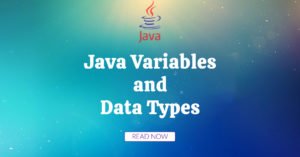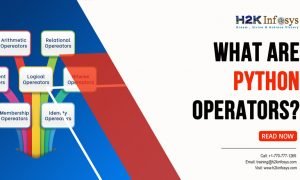Mastering DB2 Queries: Essential Interview Questions and Answers
As companies increasingly rely on robust data management systems, DB2 remains a prominent choice for many organizations. Mastering DB2 queries is a valuable skill for database administrators, developers, and data analysts. This guide covers essential DB2 Queries Essential Interview Questions and Answers, designed to help you prepare for your next interview and showcase your expertise in this powerful database management system.
What is DB2? Explain its significance.
DB2 is a family of data management products, including database servers, developed by IBM. It is designed to store, retrieve, and manage data efficiently. DB2 is known for its robustness, scalability, and support for both structured and unstructured data. Its significance lies in its widespread use across various industries, providing a reliable platform for handling large volumes of data and supporting critical business applications.
What are the key features of DB2?
DB2 offers several key features that make it a preferred choice for organizations:
- Data Integrity: Ensures the accuracy and consistency of data.
- Scalability: Can handle large databases and support high transaction volumes.
- High Availability: Provides features like HADR (High Availability Disaster Recovery) for data availability.
- Security: Offers robust security features, including encryption and access controls.
- Support for Multiple Data Types: Supports various data types, including XML, JSON, and traditional relational data.
- SQL Compatibility: Supports standard SQL, making it easier for developers to work with.
What is a DB2 instance? How is it different from a database?
A DB2 instance is an environment where DB2 databases run. It is a logical database manager environment that allows multiple databases to be created and managed independently. An instance can contain multiple databases, and each database can contain its own set of tables, indexes, and other objects.
In contrast, a database in DB2 is a collection of data organized in a structured way, stored and accessed electronically. Each database within an instance is isolated, meaning changes in one database do not affect others.
What are the different types of tablespaces in DB2?
DB2 supports several types of tablespaces:
- System Managed Space (SMS): Managed by the operating system, where the OS controls the space allocation.
- Database Managed Space (DMS): Managed by the DB2 database, providing more control over space allocation and management.
- Large Tablespace: Designed to handle large tables and large data volumes, using either SMS or DMS.
- Temporary Tablespace: Used for storing temporary data, such as intermediate results of queries.
How do you optimize a DB2 query?
Optimizing a DB2 query involves several techniques:
- Indexing: Use appropriate indexes to speed up data retrieval.
- Query Rewriting: Simplify complex queries or restructure them for better performance.
- Avoiding Unnecessary Columns: Select only the columns needed to reduce data retrieval time.
- Using Joins Efficiently: Choose the right type of join (INNER, LEFT, RIGHT) and avoid unnecessary joins.
- Analyzing Access Plans: Use tools like the DB2 Explain utility to analyze the access plan and identify bottlenecks.
- Maintaining Statistics: Keep database statistics up-to-date to help the optimizer choose the best execution plan.
Recommended to Read Also: QA training and placement
What is an access plan, and how is it generated in DB2?
An access plan is a blueprint that the DB2 optimizer generates to determine the most efficient way to execute a query. It includes details on the order of table access, the use of indexes, join methods, and other factors influencing query execution.
The access plan is generated by the DB2 optimizer, which analyzes the query, considers various execution strategies, and selects the most efficient one based on available statistics and system resources. The Explain utility in DB2 can be used to view and analyze the access plan.
Explain the concept of data isolation levels in DB2.
Data isolation levels define the degree of visibility of changes made by one transaction to other transactions. DB2 supports the following isolation levels:
- Read Uncommitted (Uncommitted Read): Allows a transaction to read uncommitted changes made by other transactions, leading to dirty reads.
- Read Committed (Cursor Stability): Only allows reading committed changes, preventing dirty reads but not non-repeatable reads.
- Repeatable Read: Ensures that if a transaction reads a row, it can re-read the same row and get the same value, preventing dirty and non-repeatable reads but not phantom reads.
- Serializable: Provides the highest isolation level, ensuring complete transaction isolation and preventing dirty, non-repeatable, and phantom reads.
What is a DB2 lock, and what are its types?
A DB2 lock is a mechanism used to control concurrent access to data, ensuring data consistency and integrity. Locks prevent multiple transactions from making conflicting changes to the same data simultaneously. DB2 supports various types of locks, including:
- Shared Lock (S): Allows multiple transactions to read a resource but not modify it.
- Exclusive Lock (X): Allows only one transaction to modify a resource, preventing other transactions from reading or writing.
- Intent Lock: Indicates a transaction’s intention to acquire a lock on a resource, preparing for more restrictive locks.
- Update Lock (U): Prevents deadlock situations by ensuring that only one transaction can obtain an exclusive lock on a resource.
How do you handle deadlocks in DB2?
Deadlocks occur when two or more transactions hold locks that the other transactions need, resulting in a standstill. To handle deadlocks in DB2:
- Deadlock Detection: DB2 automatically detects deadlocks and resolves them by rolling back one of the conflicting transactions.
- Lock Timeout: Set a lock timeout to release locks if a transaction cannot acquire the required locks within a specified time.
- Deadlock Avoidance: Use techniques like consistent ordering of resource acquisition, minimizing lock duration, and using appropriate isolation levels to reduce the likelihood of deadlocks.
What is a stored procedure in DB2, and how is it used?
A stored procedure in DB2 is a precompiled collection of SQL statements and procedural logic stored in the database. Stored procedures are used to encapsulate complex business logic, improve performance, and promote code reuse. They can be invoked by applications, triggers, or other stored procedures.
Stored procedures offer several benefits, including improved security, as they limit direct access to the database, and reduced network traffic, as multiple SQL statements can be executed with a single call.
How do you create and use a trigger in DB2?
A trigger in DB2 is a set of SQL statements that automatically executes when a specified event occurs on a table, such as an INSERT, UPDATE, or DELETE operation. Triggers are used for enforcing business rules, auditing, and maintaining data integrity.
To create a trigger, use the CREATE TRIGGER statement, specifying the triggering event and the SQL code to execute. For example:
CREATE TRIGGER trg_after_insert
AFTER INSERT ON employees
FOR EACH ROW
BEGIN
INSERT INTO audit_log (employee_id, action) VALUES (NEW.employee_id, 'INSERT');
END;
This trigger inserts a record into the audit_log table whenever a new row is inserted into the employees table.
What are DB2 cursors, and how are they used?
A cursor in DB2 is a database object used to retrieve and manipulate a set of rows returned by a query. Cursors allow applications to fetch and process rows one at a time, providing more control over query results.
Cursors are typically used in stored procedures and embedded SQL. They are declared with the DECLARE CURSOR statement, opened with the OPEN statement, and fetched with the FETCH statement. Once the cursor is no longer needed, it should be closed using the CLOSE statement.
What is the difference between static and dynamic SQL in DB2?
- Static SQL: SQL statements are embedded in the application and are compiled and optimized at compile time. Static SQL provides better performance and security, as execution plans are determined in advance.
- Dynamic SQL: SQL statements are constructed and executed at runtime. Dynamic SQL offers flexibility, allowing applications to execute ad-hoc queries. However, it may have lower performance and security compared to static SQL, as execution plans are generated at runtime.
How do you back up and restore a DB2 database?
Backing up and restoring a DB2 database is essential for data protection and disaster recovery. DB2 provides several methods for backup and recovery:
- Offline Backup: The database is taken offline, and a full backup is performed. Use the
BACKUP DATABASEcommand to create a backup image. - Online Backup: The database remains online and accessible during the backup process. Use the
BACKUP DATABASEcommand with theONLINEoption. - Incremental Backup: Backs up only the changes since the last backup. Use the
BACKUP DATABASEcommand with theINCREMENTALoption.
To restore a DB2 database, use the RESTORE DATABASE command, specifying the backup image and any additional options, such as ROLLFORWARD to apply transaction logs and recover the database to a specific point in time.
What are DB2 data types, and how are they classified?
DB2 supports a wide range of data types, classified into the following categories:
- Numeric Data Types: Includes
INTEGER,SMALLINT,BIGINT,DECIMAL,FLOAT, andDOUBLE. - Character Data Types: Includes
CHAR,VARCHAR, andCLOBfor storing character strings. - Date and Time Data Types: Includes
DATE,TIME, andTIMESTAMP. - Binary Data Types: Includes
BINARYandVARBINARYfor storing binary data. - Boolean Data Type: Represents true/false values using the
BOOLEANtype.
These data types allow DB2 to store and manipulate various kinds of data efficiently, supporting diverse business requirements.
Conclusion
Mastering DB2 queries is crucial for database professionals seeking to excel in their careers. Understanding the essential concepts, features, and best practices of DB2 can significantly enhance your performance in interviews and on the job. This comprehensive guide to DB2 interview questions and answers provides a solid foundation for showcasing your knowledge and expertise in this versatile database management system. Whether you’re a seasoned professional or a newcomer to the field, continuous learning and practice will ensure you stay ahead in the ever-evolving world of data management.
Recommended to Read Also: Software testing bootcamp with job guarantee

























